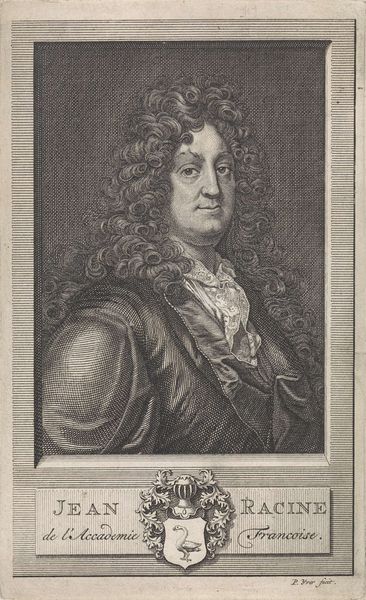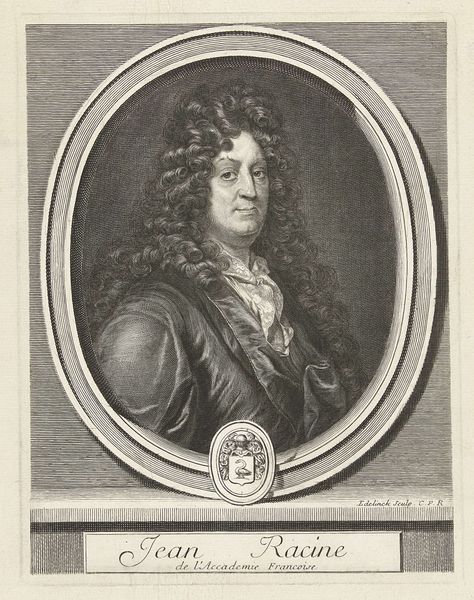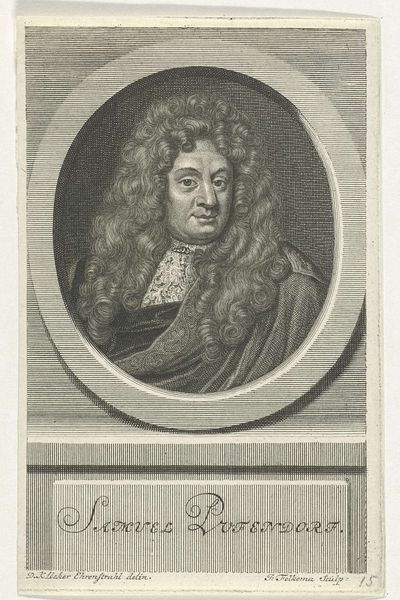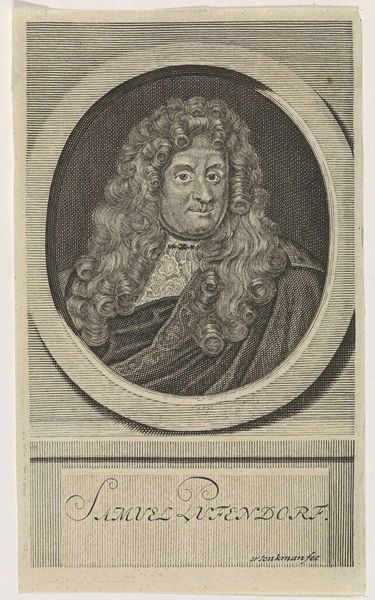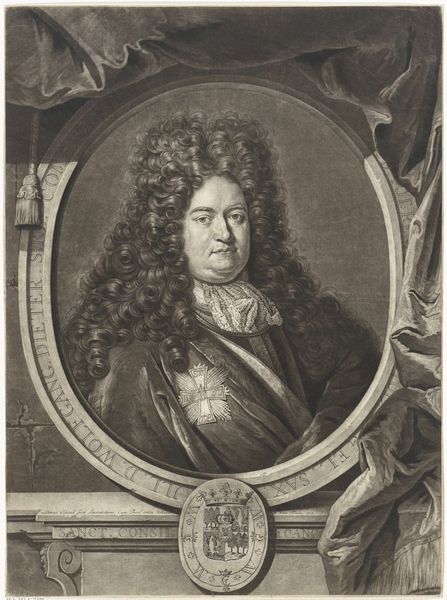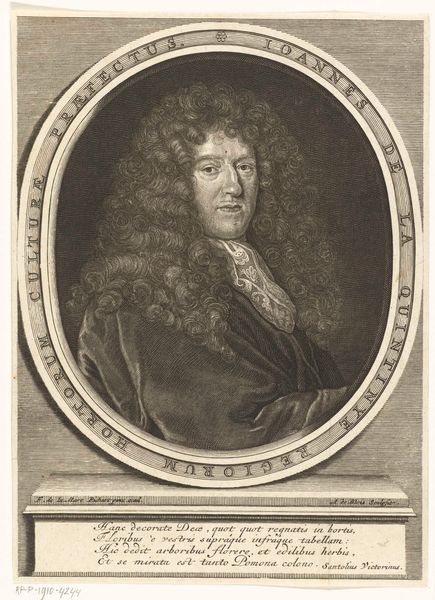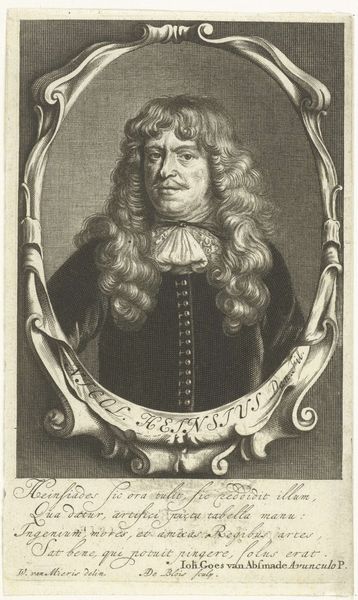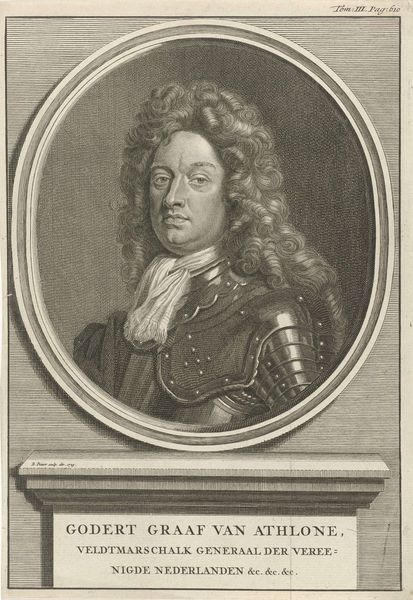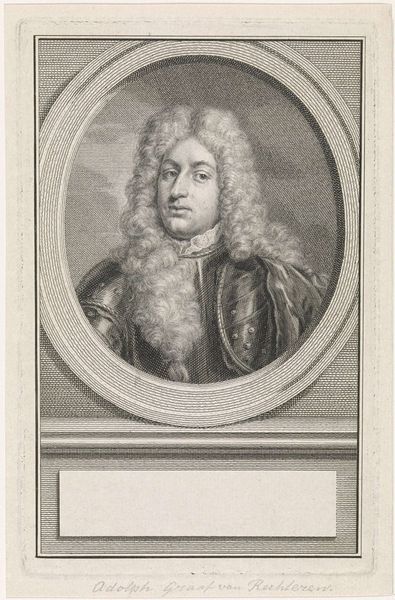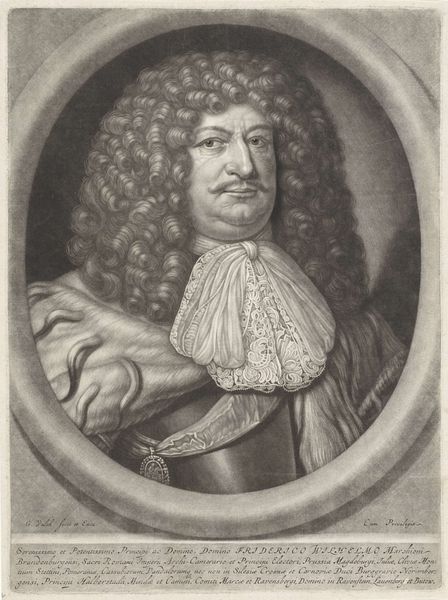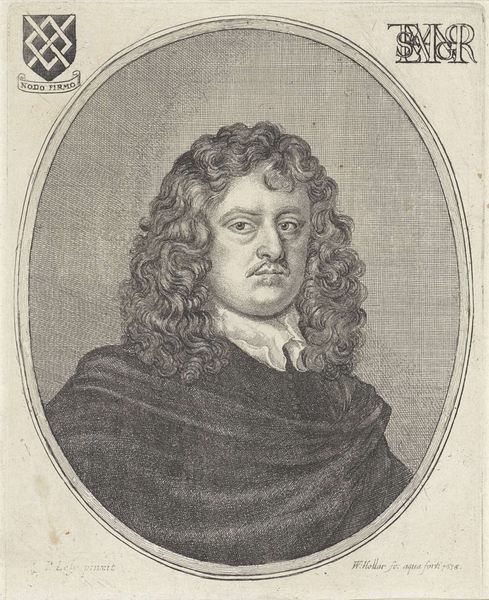
engraving
#
baroque
#
old engraving style
#
portrait reference
#
19th century
#
engraving
Dimensions: height 227 mm, width 164 mm
Copyright: Rijks Museum: Open Domain
Curator: Looking at this engraving, what immediately strikes me is the intensity of expression in Jean Racine's eyes, quite commanding for a work rendered entirely through the precise art of engraving. Editor: It has a somewhat melancholic feel to me. Considering this portrait of Jean Racine dates roughly from 1740 to 1760, tell me more about how engravings circulated and shaped ideas about prominent figures during this era. Curator: During that time, engravings like this weren't just decorative; they served a vital function. They helped disseminate images of influential individuals, propagating their likenesses and, by extension, solidifying their cultural presence. In the context of the French Enlightenment, visibility was a form of power. Editor: I notice the ornate oval frame surrounding the portrait and the rather elaborate wig. How might these details contribute to the message conveyed by the image? Curator: Both serve as powerful visual signifiers. The oval frame, a common Baroque motif, lends an air of classical refinement, immediately connecting Racine with intellectual and artistic tradition. As for the wig, well, it was the height of fashion and status, indicating Racine's position within the French court and the literary world. But notice also the pelican coat of arms: for centuries it was the symbol of sacrifice and selflessness. Editor: An interesting contrast! So we have both vanity and virtue intertwined in his presentation. And what of the text beneath the image—what does it signify? Curator: The inscription below is key. It's a quotation about Racine's skill—"Voler aussi haut que Corneille," indicating the intent of Racine’s project in reviving old forms in verse. But, crucially, it functions as promotional copy and tribute, securing his literary legacy by linking him to the French literary canon. Editor: Thinking about the historical context, I wonder, were these portraits widely accessible, or were they primarily consumed by a specific class or intellectual circle? Curator: While engravings were more accessible than painted portraits, distribution still depended on wealth and social standing. Educated elites and members of the bourgeoisie, keen to engage with intellectual trends and display their knowledge, were most likely to collect and circulate such images, particularly as they related to literary and theatrical figures. Editor: Seeing how carefully the portrait blends personal presentation with larger artistic and social currents certainly enhances its lasting significance. Thanks for sharing your insights. Curator: Indeed. Considering this engraving through its layered symbols, we realize it goes beyond mere likeness, revealing cultural memory, constructed fame, and the fascinating social fabric of the French Enlightenment.
Comments
No comments
Be the first to comment and join the conversation on the ultimate creative platform.
